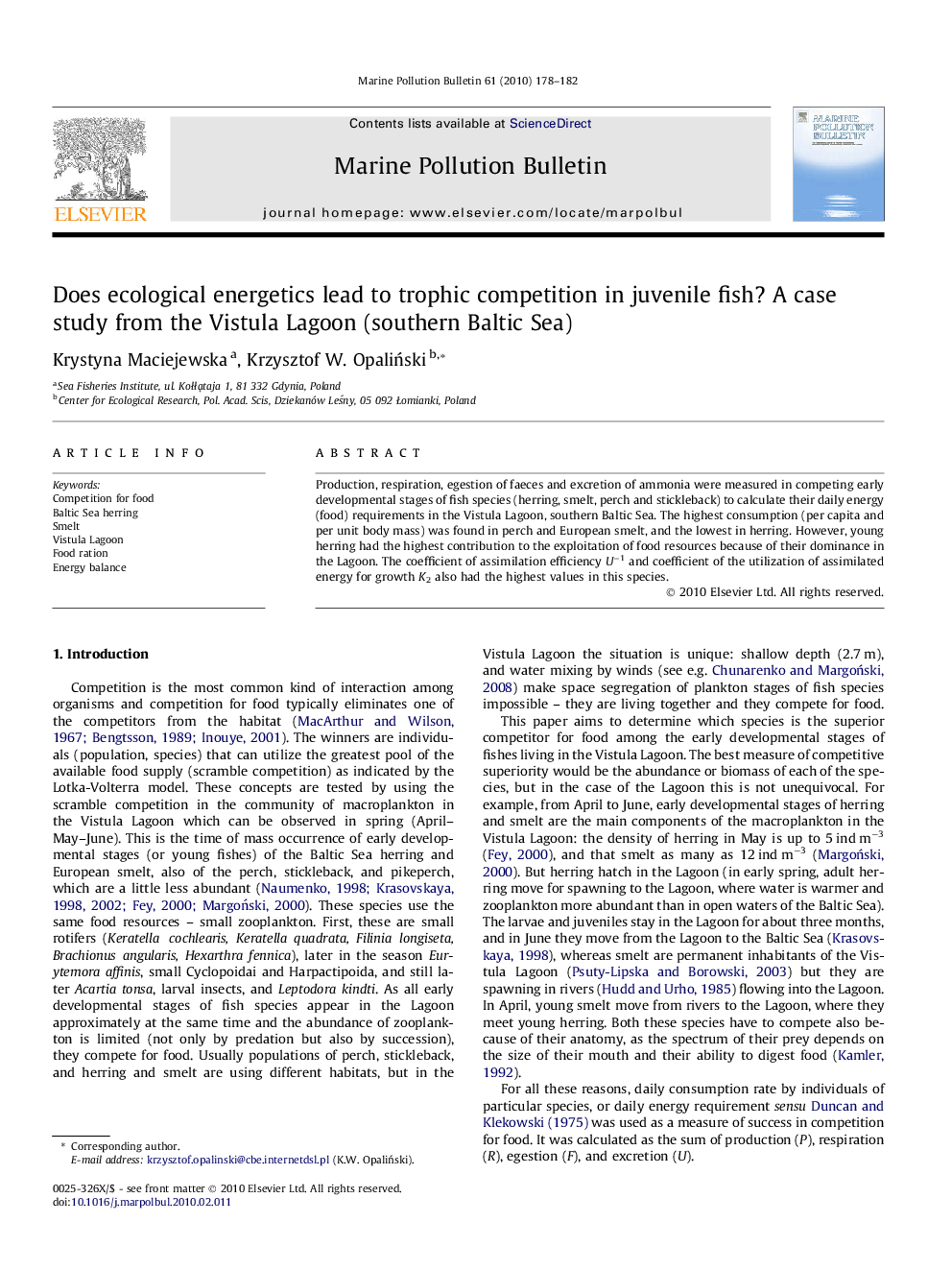| Article ID | Journal | Published Year | Pages | File Type |
|---|---|---|---|---|
| 6362457 | Marine Pollution Bulletin | 2010 | 5 Pages |
Abstract
Production, respiration, egestion of faeces and excretion of ammonia were measured in competing early developmental stages of fish species (herring, smelt, perch and stickleback) to calculate their daily energy (food) requirements in the Vistula Lagoon, southern Baltic Sea. The highest consumption (per capita and per unit body mass) was found in perch and European smelt, and the lowest in herring. However, young herring had the highest contribution to the exploitation of food resources because of their dominance in the Lagoon. The coefficient of assimilation efficiency Uâ1 and coefficient of the utilization of assimilated energy for growth K2 also had the highest values in this species.
Related Topics
Physical Sciences and Engineering
Earth and Planetary Sciences
Oceanography
Authors
Krystyna Maciejewska, Krzysztof W. OpaliÅski,
